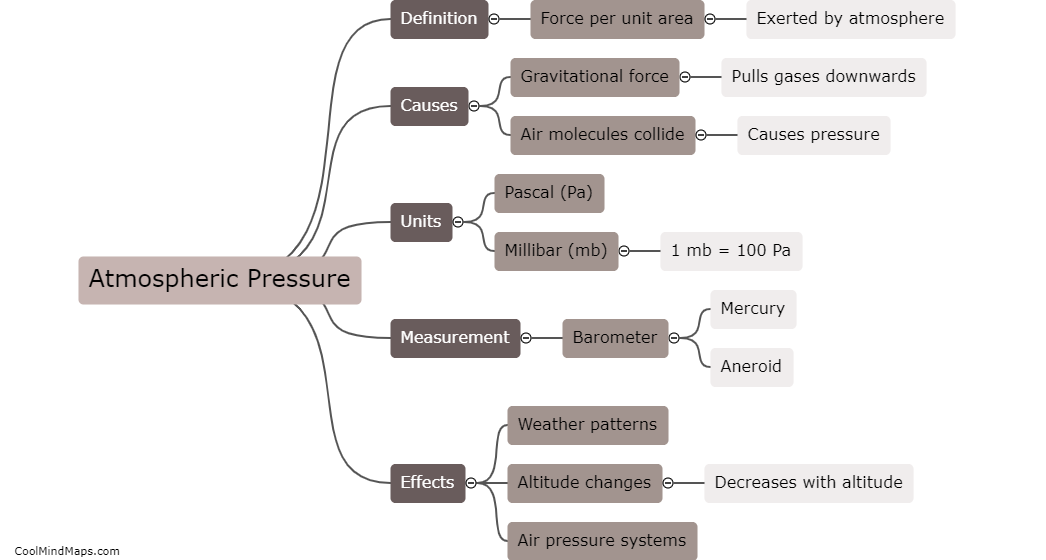How does atmospheric pressure vary with altitude?
Atmospheric pressure, also known as air pressure, refers to the force per unit area exerted by the weight of the Earth's atmosphere on any given surface. It is measured in units of millibars (mb) or hectopascals (hPa) and decreases as altitude increases. This variation occurs because the Earth's atmosphere is compressed by gravity, making it denser and resulting in higher pressure levels closer to the surface. As one ascends to higher altitudes, the weight of the overlying atmosphere decreases, causing the air molecules to become less concentrated, and thus, atmospheric pressure to drop. This relationship between pressure and altitude is known as the barometric formula and is an essential concept in understanding weather patterns and the behavior of gases in the atmosphere.

This mind map was published on 19 December 2023 and has been viewed 83 times.











